heel pain
Displaying items by tag: heel pain
Dr Brandon Nelson, A Board-Certified Physician & Surgeon Discusses Heel Pain That Will Not Go Away

Heel pain is by far the most common thing I see in the office. The number one cause is still being plantar fasciitis. Most patients with heel pain will have resolution of their pain within a month of seeing me. However, there is a small percentage of patients that do not get better and further work up is warranted. We call these patients the outliers or red herrings. There are about 2 main causes of outliers or red herrings. These are nerve issues, i.e., Baxter’s neuritis or a stress fracture.
Baxter’s neuritis is not as common as plantar fasciitis. It is basically an entrapment of a nerve near the heel. The nerve becomes irritated and compressed. The symptoms can be similar to plantar fasciitis. The most common symptom seems to be burning in the heel. Burning or tingling are often associated with nerve pain. Usually, a nerve conduction study is required to diagnose this entrapment. Once it is diagnosed sometimes a local injection of the nerve can help or a prescription orthotic to offload the area can be quite helpful. Baxter’s neuritis differs from a stress fracture in presentation usually.
A stress fracture of the heel bone or calcaneus both can cause heel pain however usually in different areas. With the stress fracture it is usually a constant pain that is a dull ache or throb. Additionally, there is often an increase in training that has resulted in a stress fracture. Usually, a stress fracture will require an MRI and most resolve with time and protected weight bearing. If you are suffering from heel pain, especially if it has been going on for more than a couple weeks I can help. If you are experiencing foot or ankle pain, give us a call at 425-391-8666 or make an appointment online.
Sincerely,
Dr Brandon Nelson, A Board Certified Physician & Surgeon, Discuss Heel Pain
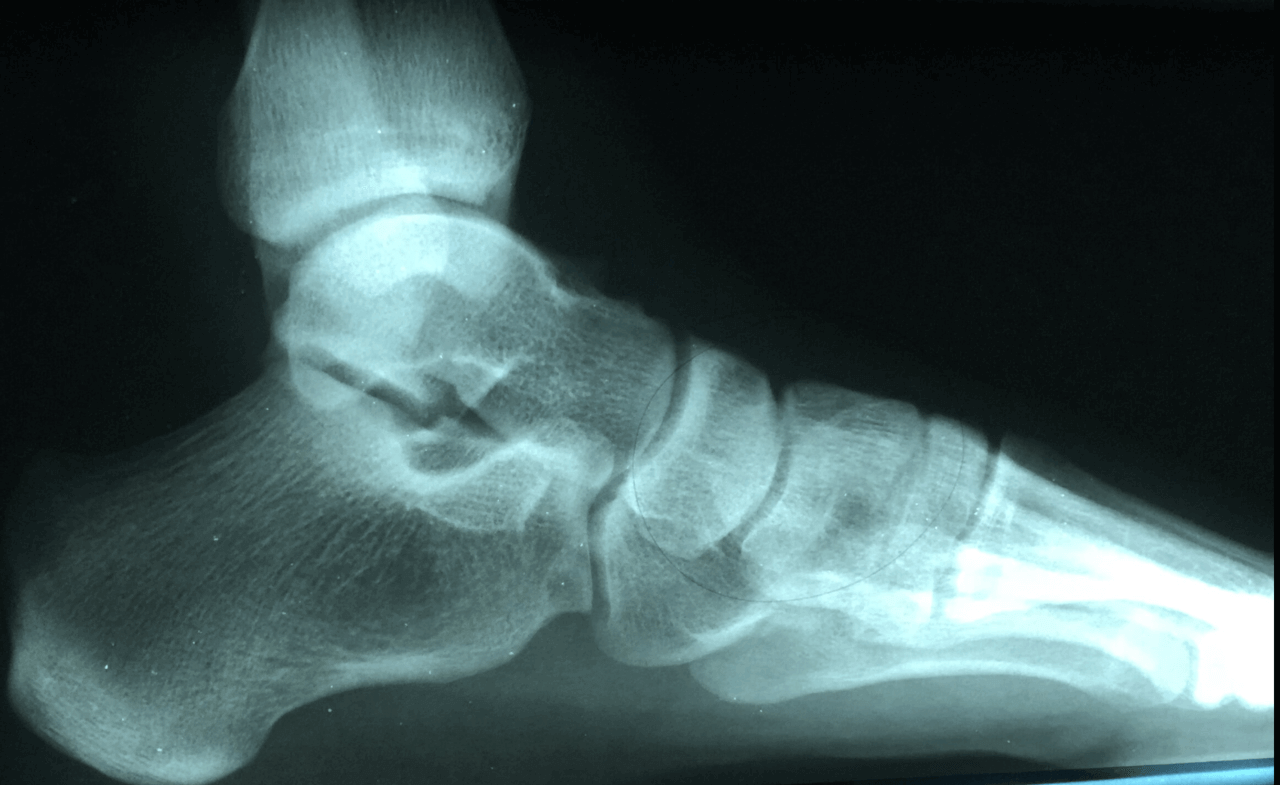
Heel pain can usually be broken down into a few main causes. The first and most common is plantar fasciitis. This is usually pain right at the bottom of the heel bone towards the inside arch. The second most common cause is Achilles tendonitis. This pain is more found towards the back of the heel. Lastly there is a condition called Baxter’s neuritis that can cause burning in the foot. This pain is usually on the inside of the foot.
Plantar fasciitis is by far the most common cause of heel pain. It is typically seen in adults between the ages of 40-60. Typical symptoms are pain in the morning or pain after rest. It is often an overuse type injury. Plantar fasciitis can usually be treated successfully and the protocol I use keeps people exercising for the duration of treatment.
Achilles tendonitis usually presents with swelling near its insertion towards the back of the heel. Sometimes a catching or popping can be felt. This is also another pathology associated with overuse. I cannot stress enough that this should be evaluated immediately.
Baxter’s neuritis is a little trickier. This condition usually presents as a burning in the heel but can mimic plantar fasciitis. I usually see this in conjunction with plantar fasciitis. This pathology usually requires special testing to identify.
If you have heel pain I can help. I think this is some of the most frustrating injuries to deal with especially for the people that are training. If you are experiencing heel pain, give us a call at 425-391-8666 or make an appointment online today.
Sincerely,
Dr Brandon Nelson
Dr Brandon Nelson, A Board Certified Physician & Surgeon, Discuss Heel Pain and When to See A Physician
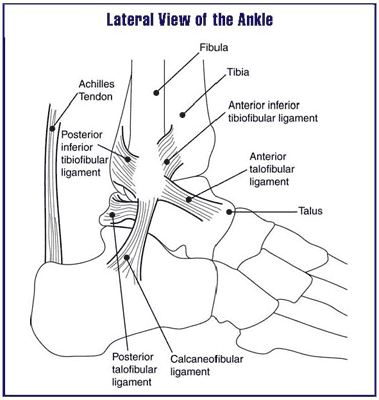
Heel pain is by far the most common pathology I see in the office. It is so common among adults it is estimated that 1 out of every 4 currently are experiencing heel pain. It is also postulated that 60% of all adults will have heel pain at some point in their lives. It is important to understand the causes of heel pain and when to seek professional help. The most common causes are plantar fasciitis, Achilles tendon issues and nerve entrapments or irritation.
Plantar fasciitis is by far the most common cause. It often is described as a dull ache or bruised sensation. This is usually on the bottom of the heel. Plantar fasciitis can be painful in the morning, first step pain, or after activities. One of the most common presenting symptoms is pain after any period of rest. Plantar fasciitis is an overuse injury and I recommend always seeking physician input on this one as you may develop tearing in the fascia with increased symptoms.
Achilles tendon issues can also present with pain in the heel or around the heel. The Achilles tendon is the thickest strongest tendon in the human body and it is constantly under load. It is therefore prone to developing issues especially in physically active individuals. The Achilles tendon type pathologies often have swelling or sharp shooting pains near the heel. Again this is one to seek help early as the average recovery of Achilles tendon issues can take 4-6 months.
Nerve entrapments of the heel or Baxter’s neuritis or tarsal tunnel syndrome often have burning or electrical type symptoms. There is a correlation with other nerve issues in the body like neuropathy or carpal tunnel or fibromyalgia. Nerve issues are an urgent matter and early intervention is key so do not wait on these ones. I recommend immediately making an appointment. The nerves usually require testing to identify and prevent long term damage.
If you are having heel pain I can help call and schedule an appointment today. Give us a call at 425-391-8666 or make an appointment online.
Sincerely,
Dr. Brandon Nelson, A Board Certified Physician & Surgeon, Discuss Heel Pain
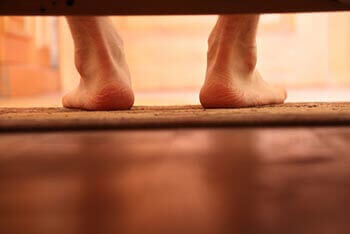
“Ouch my feet are killing me when I get out of bed!” This is what I used to say every morning. Heel pain can be so overwhelming and frustrating, especially if you are having pain with your first step in the morning. I remember those days so well and I could hardly bring myself to get out of bed. Plantar Fasciitis will affect about 60% of all adults at some point in their lifetime.
Heel pain or plantar fasciitis is by far the most common reason people seek care from a foot & ankle physician. Once a physician is involved normally recovery can be extremely fast. I specialize in treating heel pain and can get you back on your feet and on the road fairly quickly. The majority of patients I see are 50-80% better in less than 1 week. The fact I have suffered from it myself keeps me abreast to the latest and most effective techniques available to feel plantar fasciitis.
Not all heel pain is the same. There can be many other causes of heel pain that is why physician care is essential. An x-ray is warranted in order to rule out other causes and start the appropriate treatment. I find experience can be extremely valuable for heel pain care. There are quite a few outliers that can mimic plantar fasciitis. If you are suffering from heel pain I can help! Give us a call at 425-391-8666 or make an appointment online today.
Sincerely,
Dr. Brandon Nelson, A Board Certified Physician & Surgeon, Discusses Heel Pain, Sore Heels and Heel Pain Treatment

Heel pain can have many causes and can be extremely challenging for all patients. Not all sore heels are caused by plantar fasciitis and it is important to understand the underlying cause. Identifying the underlying cause will help to assure patients get the best treatment options. Even with many other causes of a severe heel pain, the number one cause continues to be plantar fasciitis.
Plantar fasciitis is basically an inflammatory process of the main supporting network of the foot. The primary cause of inflammation seems to be overuse and repetitive stress. The plantar fascia in general has a relatively poor blood supply and this can lead to chronic inflammation. Once we see chronic inflammation set in it can become extremely difficult to reduce pain and resolve one's heel pain.
Heel pain treatment options are vast. It really boils down to what the primary cause of the heel pain was and the activity level of the patient. I like to break it down to foot structure and rear foot pathologies. What I mean by foot structure is does the patient have a high arched foot or a low arched foot. Is there a lot of pronation that occurs with ambulating or overloading of the foot? Rear foot pathology can have a large effect on heel pain. Is there a tight calf muscle or is there a dysfunctional supporting tendon? The best long term outcome and shortest course to a pain free heel is to appreciate the deforming forces.
If you have severe heel pain or pain under your heel or even pain with running I can help! Give us a call at 425-391-8666 or make an appointment online today.
Sincerely,
Dr. Brandon Nelson, A Board Certified Physician & Surgeon, Discusses Heel Pain That Will Not Go Away

The most common cause of heel pain continues to be plantar fasciitis. This is usually caused by a foot structure that puts too much pressure on the fascia or tight muscle groups. The majority of plantar fasciitis will go away with physician care and patients will return to normal activities. However, there are a few patients that their heel pain does not get better and need additional treatment.
If you are one of these patients it is important to see a physician that specializes in heel pain. There can be a few diagnoses that need to be considered for anyone that has recalcitrant heel pain. These can range from nerve to bone issues and a careful work up is warranted. Our practice has been home to the Washington Heel Pain Center for years. We were actually the first heel pain center in Washington State and then saw many other offices try to follow suit. However, our physician group finds heel pain fascinating and we diligently scour the latest research to remain up to date on causes and treatment options.
If you suffer from heel pain and have seen other doctors we can help. Or maybe heel pain is new for you and you want the best care we can help. We provide the best care and have the quickest options to get you back exercising or keep you exercising. Make an appointment today and we can help. Give us a call at 425-391-8666 or make an appointment online today.
Sincerely,
Dr Brandon Nelson, A Board-Certified Physician and Surgeon, Discuss How To Best Treat Your Heel Pain

Heel pain is the most common presenting pathology at my practice. In general, I would say 1 out of every 6 patients is for heel pain. This can be common for both adults and children. The adult usually has heel pain that is caused by plantar fasciitis and for children this is usually apophysitis or Sever’s disease.
Adult heel pain is common as one starts an exercise program or as our mileage on our feet increases. The symptoms usually begin with pain in the morning or after a walk. The feeling is often described as a bruised sensation or a burning pain. It is important to identify the underlying causes and address these. I do think an x-ray is warranted and the earlier the treatment the better.
Children usually seem to have heel pain between the ages of 10-14. The typical child has been playing sports, especially cleated sports. They usually describe a soreness that can result in limping. It is again important to take an x-ray and for underlying foot conditions.
Both plantar fasciitis and apophysitis seem to be most common in certain foot structures. These include flatfeet and tight Achilles’ tendons. I recommend stretching the calf for the tight achilles. However, the flatfoot needs to be thoroughly evaluated to prevent long term issues. I really enjoy treating both of these conditions and have great long-term protocols to eliminate this pain once and for all.
If you or your child is suffering from heel pain please call so I can help. Make an appointment online or give us a call at 425-391-8666.
Sincerely,
Board-Certified Foot & Ankle Physician & Surgeon
Dr. Brandon Nelson, Board-Certified Foot and Ankle Physician and Surgeon, Discusses Heel Pain in Kids and Adults

Pediatric heel pain or kids with heel pain are a common presentation. This heel pain is often correlated with the start of new activities or any sport season. The most common sports that heel pain occurs with children are basketball and soccer. Basketball seems to make sense as the hardwood floor can be tough and with soccer cleats seem to be an aggravating factor. It is important to have your child properly evaluated for heel pain, however the most common cause is inflammation of the growth plate. These growth plate issues are easy enough to diagnose based on clinical evaluation and radiographic findings. It is important to have x-ray heel pain because there are other causes and the treatment is tailored towards the specific pathology. Traditionally with proper implementation of a treatment plan, heel pain is usually amenable to conservative measures including clear fairly quickly.
Adult heel pain by far is most commonly caused from plantar fasciitis. Plantar fasciitis usually involves an inflammation of the plantar fascia or the supporting network of the bottom of the foot. There are many common clinical symptoms that we see each year including pain after rest or burning throbbing type sensation of the heel. Typically for adults this heel pain starts in one heel and gets worse with activities and time. Again it is important to have a thorough workup including radiographs or ultrasound examination of the heel. I believe it’s important to get in and see a foot and ankle physician fairly early in this process as this makes treatment easier. Again the majority of patients with this pathology clears up with conservative measures and returned activities.
If you suffer from heel pain or trauma suffering from heel pain I can help. Please feel free to contact the office and we will get you back on your feet pain-free. Give us a call today at 425-391-8666 or make an appointment online today.
Dr. Timothy Young, a Board-Certified Foot Surgeon, Discusses Shockwave Therapy For Stubborn Achilles Tendinitis and Plantar Fasciitis
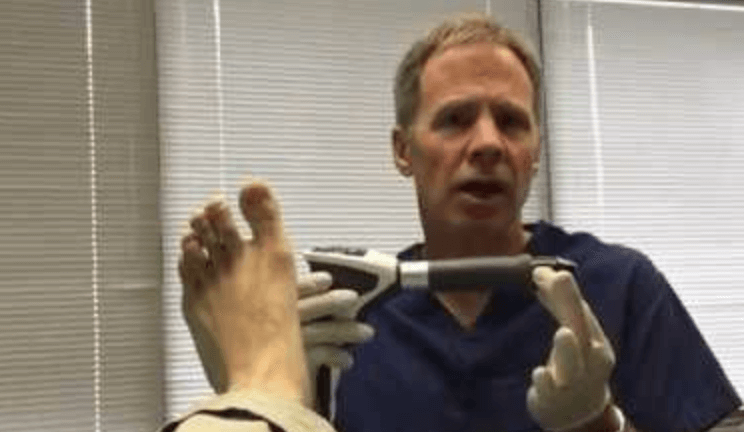
Dr. Timothy Young, a board-certified foot surgeon discusses, Shockwave therapy for stubborn Achilles tendinitis and plantar fasciitis. (EPAT)
Many of our plantar fasciitis and Achilles tendinitis patients respond well to traditional therapy. This includes appropriate gym shoes, prescription orthotics, braces, a night splint and stretching.
However, some patients have more stubborn cases. In these cases shockwave therapy is highly effective. In Dr Young's experience, this can be 80–90 percent effective for patients who have not had adequate relief with the traditional treatments. There are some cases that are so severe that we also use PRP (platelet rich plasma).
The shockwave therapy is typically done once a week for 5 treatments. There is no down time with shockwave therapy and there are no injections.
The Shockwave therapy protocol includes avoiding nonsteroidal anti-inflammatories like Aleve or Advil, avoiding icing, and taking supplemental boron - 3 mg per day and collagen. The clinical improvement after shockwave can continue to progress over 3-4 months.
Shockwave therapy is a form of regenerative medicine. The shockwave therapy itself is a fairly intense treatment and the targeted tissue benefits from the shockwave therapy with increased blood flow and increased local healing factors much like other forms of regenerative medicine. The body responds to shockwave therapy such that the local tissues respond as though there is trauma and this triggers many of the bodies own natural healing.
If you are experiencing foot or ankle pain, give us a call at 425-391-8666 or make an appointment online today.
Dr. Brandon Nelson, Board-Certified Foot and Ankle Surgeon, Discusses Pediatric Heel Pain
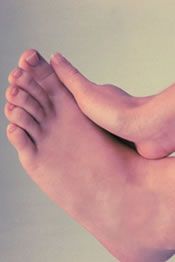
Pediatric or child heel pain is a common condition that begins to affect most young girls between the ages of 10 and 14 and young boys between the ages of 12 and 14. There seems to be a large correlation with previous family history where parents relate that they experienced heel pain as children. Most kids will describe a throbbing-like sensation that is worse with activities and increases with the more they do and normally resolves with rest. The #1 cause remains an inflammatory condition of the growth plate or what is called apophysitis or Sever’s disease.
Sever’s disease or apophysitis is very treatable condition and the early intervention easier is to recover. Most kids that have apophysitis typically have a flatter foot or playing a sport in cleats. I do recommend an x-ray and a thorough evaluation because there are other causes of heel pain including bone pathology like stress fractures or tumors. Typically there will be less pain with shoes and icing can be helpful.
If your child is having heel pain I can help. Please make an appointment to have them evaluated and get them on the road to recovery.
Give us a call at 425-391-8666 or make an appointment online today.



